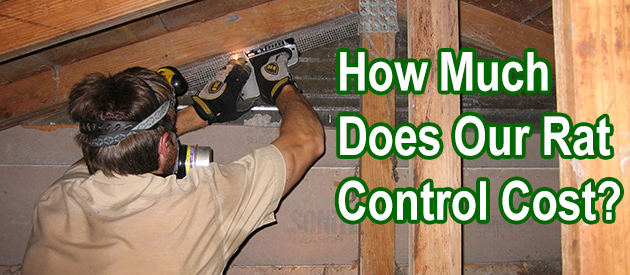Clarke County, Athens-Clarke Rat Control Situation:
Dave, I just wanted to thank you so much for the great site on dealing with rats in the attic, as well as listing pest control companies that deal with rat issues. I thought I had mice in the attic, but I now think it's rats. I set two mouse snap traps almost three days ago. Early this morning, I was awakened by the sound of plastic banging in the attic. My only thought is that I've caught something, but I don't think it's a mouse. A mouse would have died instantly. Anyway, I do have a few questions for you. First, do you think the mouse trap killed the rat, or will kill it, or is it just injured? Second, any tips on safely climbing in the attic to prevent getting bit by a rat? I noticed your pics on your site about having to get into tight spaces. I would worry about encountering a rat by doing that. One last question, any tips on accessing tight areas for a tall guy? I'm 6'3" and I wasn't able to get close to the soffit area in one area of my home. The particular area has a cathedral ceiling and the roof gets closer to the rafters as you get closer to the soffit area. I attempted to move down in a particular area where I've heard noise, but my legs began cramping really bad.
Athens-Clarke Rat Control Tip of The Week
Why Is Rat Feces Dangerous To Breathe Or Touch?
Apart from rats being a significant threat to your house, the health implications of having their feces around your home is something that you need to be concerned about. Rat feces are carriers of all kinds of pathogens and diseases that can infect you when you have direct contact with them. This simply shows how dangerous rat feces are and why it is very important for you to avoid touching them or breathing them in.
Rats are a very active household pest, you can find them at almost every corner of your home, including your bedroom, bathroom, kitchen, and other rooms in your home. If you have a rat problem, their feces will be found in all these places. This shows that you are at risk of getting infected if the proper sanitization of your home is not done.
Rat feces are carriers of dozens of pathogens and bacteria, with each of these having the possibility of causing lethal health complications. One of the most common of these rat feces related infections is Hantavirus. This particular infection is medically known to cause severe health complications that could lead to death if not managed properly.
To simply avoid exposing yourself to these infections and diseases, you need to avoid touching or breathing in rat feces. The best way to avoid this is to use personal protective equipment such as gloves and a mask when cleaning your home.
Also, if you have a rat problem, you need to hire a professional wildlife agent to help disinfect your home after removing all the rats. By doing this, you will be able to protect yourself from the diseases and pathogens carried by rat feces.


